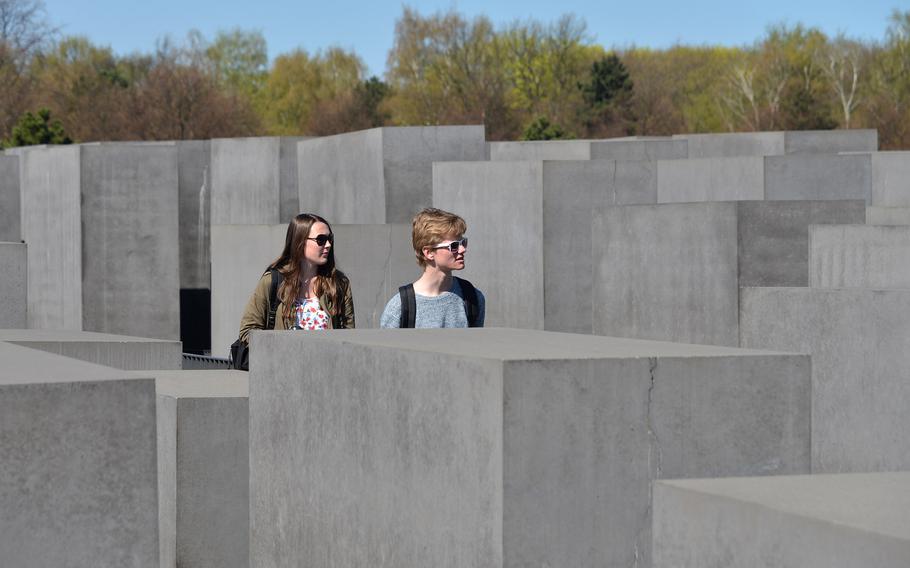
Visitors walk through the Field of Stelae, the 2711 concrete blocks that makes up most of the Memorial to the Murdered Jews of Europe in Berlin. (Michael Abrams/Stars and Stripes)
It’s not your grandfather’s Berlin.
When World War II ended, Berlin lay in ruins. Half-starved survivors eked out a bare existence without food, heat, shelter and hope. Germany’s defeat was so profound that Germans refer to that time as the “null stunde,” or “zero hour,” when everything had to start again from scratch. Nothing remained that made life worthwhile.
Seventy years later, Germany has risen to the economic powerhouse of Europe. Its capital Berlin has regained its position as one of the continent’s premier cities, a vibrant center of commerce, clubs and culture that draws inhabitants from around the world.
Amid the glitz and glamour, Berlin is a city of ghosts, filled with reminders of some of the most terrible events of the 20th century. They serve as a constant reminder of suffering and death, and how without vigilance, politics can go terribly wrong.